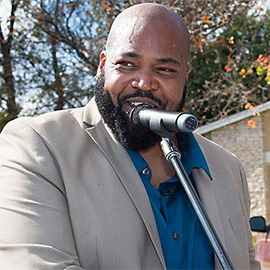Absolutely. As a lifelong Austinite, that has friends and family that have forced to outer edges of Austin, I can attest the validity of that report.
Early on, we looked at our platform through the lens of attracting Black folks back to Austin. We knew that jobs were readily available, though pay is wont, folks can find work should they be willing to accept subpar employment. But, folks that worked in the city of Austin, more often than not, cannot afford to live in Austin. We looked at property taxes being the key driver to folks being displaced from East Austin, and consistently that’s what we’ve been told over the last year and a half. Tertiarily, we looked at healthcare being one of the most significant factors in the lives of the folks that have been displaced, as one of the reasons they can’t afford to live in Austin.
With that in mind, we put together the District One Plan. From the outset we sought solutions that would benefit folks overall, but particularly solutions that would draw Black folks back to Austin.
- Affordable Housing as a Human Right
○ Our belief is that housing is a human right. Approaching fair housing from a policy perspective has not fared well for the folks who are supposed to benefit from such policy efforts. However, we believe by creating permanently affordable housing, as opposed to attempting an induction or waiting for naturally occurring affordable housing is the first step. We can do better finding ways to help those who work in the city, to begin to be able to live in the same city they work in. https://actionnetwork.org/petitions/join-the-peoples-plan-for-austin-housing
- Healthcare for All
○ With our DistriCare plan service providers would be able to bill one entity. This alone potentially reduces premiums for individual and by expanding Austin Public Health, we can provide genuine access to equitable health care to folks in District 1. Districare is based on Healthy San Francisco, which has been in effect for over 10 years and cost around $45 million a year.
○ Healthy San Francisco, the brainchild of then-San Francisco Supervisor Tom Ammiano, is available to all city residents, ages 18 and older, who earn up to 500 percent of the federal poverty level — $60,300 for a single person — and who have no other health coverage option. Undocumented residents are also eligible.
○ Under the model, nearly three dozen San Francisco community health centers and six hospitals take care of about 14,000 patients — down from a high of 65,000 before Obamacare kicked into high gear in January 2014.
○ Healthy San Francisco is partially funded through the city’s general fund, which in the last fiscal year paid out $27 million to the health plan, while San Francisco employers contributed $15 million and participants kicked in $2 million in fees. Under the law, businesses with 100 or more employees must pay $2.64 an hour per covered employee on health care, while those businesses with 20 to 99 employees must pay $1.76 an hour per worker.
○ Finally, some of the program’s patients must contribute on a sliding scale. The cost are as as low as $240 a year. The most an individual can pay is $1,800 a year.
- Community Land Trusts
○ Our campaign endorsed the $250 million housing bond that the Austin City Council recently approved for the ballot in November. Our endorsement comes with a strong push to spend the bond money in an equitable and transformative way. We are calling for the $100 million dollars set aside for land acquisition to be converted into a Municipal Affordable Housing Trust. The Municipal Affordable Housing Trust would invest in community land trusts to create permanent, equitable, and affordable housing in Austin.
“Housing is a human right. We must invest these funds into the communities who have been historically displaced by gentrification. We have an opportunity to create something that no other city in Texas has been able to accomplish–Permanent, independent, and affordable housing. By instituting a community land trust, we can create community-driven, not-for-profit housing and make Austin truly affordable.”
- Municipal Job Guarantee
○ Our proposal is for a permanent “public option” employment program with public purpose that offers a living wage plus benefits to any worker who cannot find decent employment in the wider labor market.
○ The Meet and Confer contract with APA was set to cost the city $82.5 million to provide APD officers with certain specialty compensations. APD officers are the highest paid in the state, making nearly 14 percent more than the next highest-paid department. Currently APD employs roughly 1,600 officers.
○ These jobs would include the repair and maintenance of the city’s infrastructure, revamping our waste disposal and recycling efforts, and providing universal child care. Everyone would be guaranteed a minimum salary of $23,000 a year. We would be be able to employ over 3,500 people, with the addition of health and other benefits resulting from DistriCare, this could bring annual compensation up to approximately $50,000.
○ The MJG could employ people across different public service sectors, especially in light of an ailing national infrastructure, under-resourced commons and
growing elder care needs. Jobs can range from construction, education and health services, supportive housing, libraries, child and elder care, sanitation, parks and recreation to projects generally designed to transform cities toward green, emission-free, municipalities.
○ An MJG program also would include training programs and professional development, provide physical and mental health coverage, family leave options and a vested pension, and promotion opportunities via an internal job ladder. It would ensure a participant all the rights to collective bargaining, or to affiliate with a public sector-based union similar to other municipal workers.

